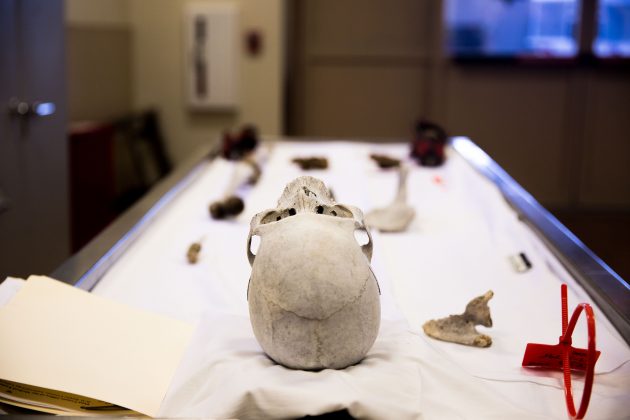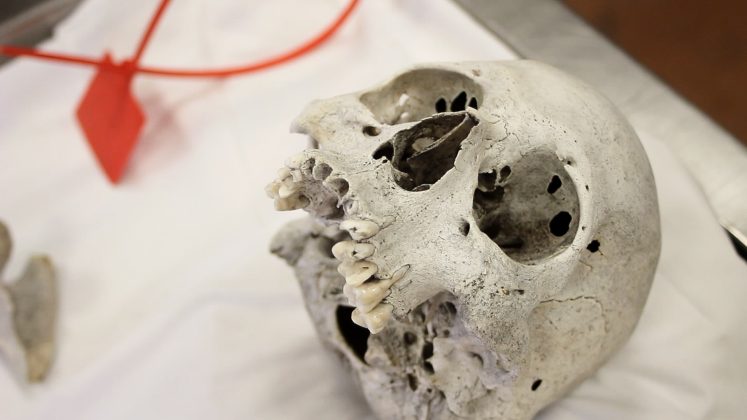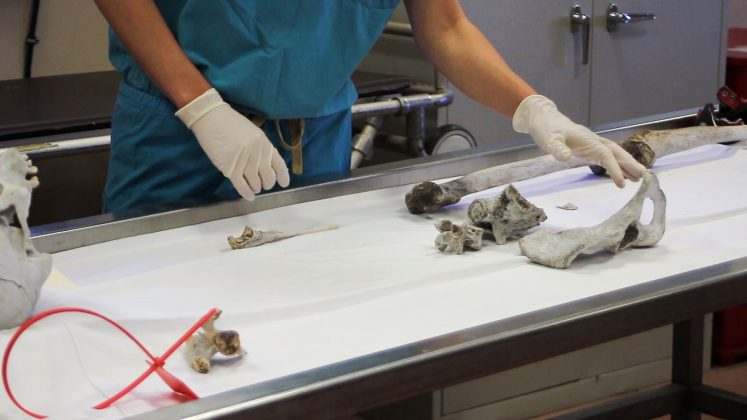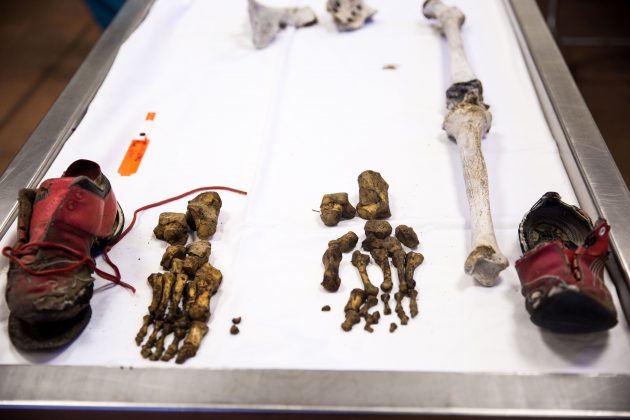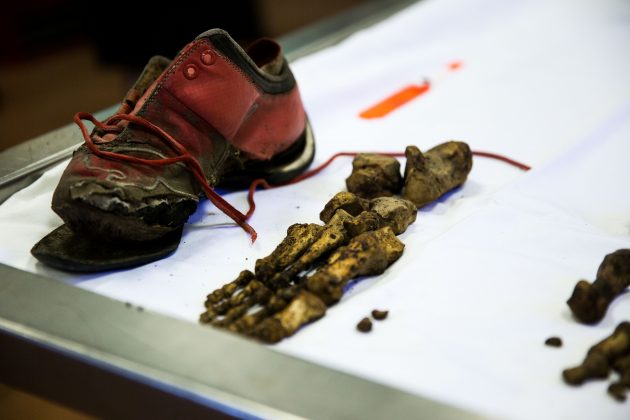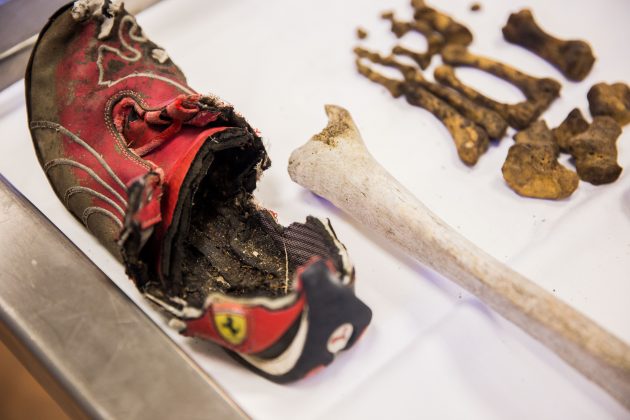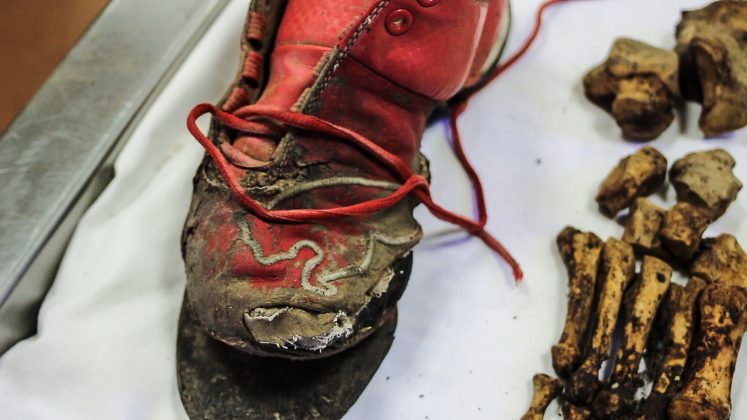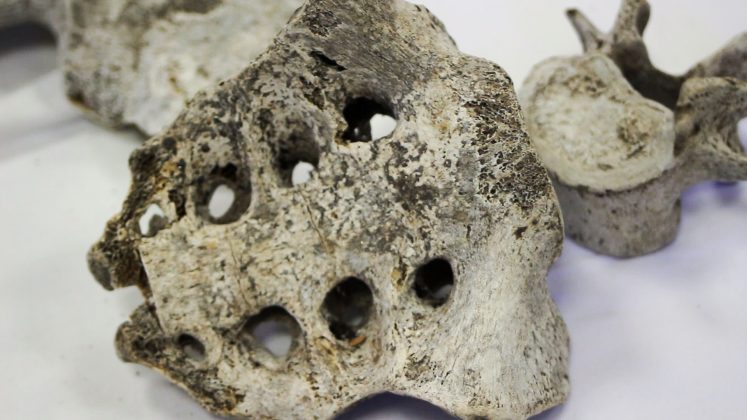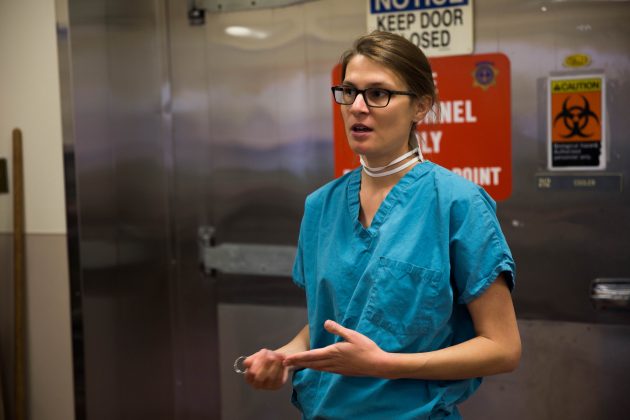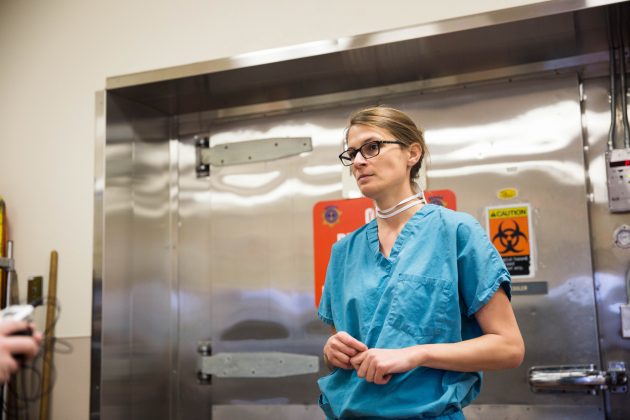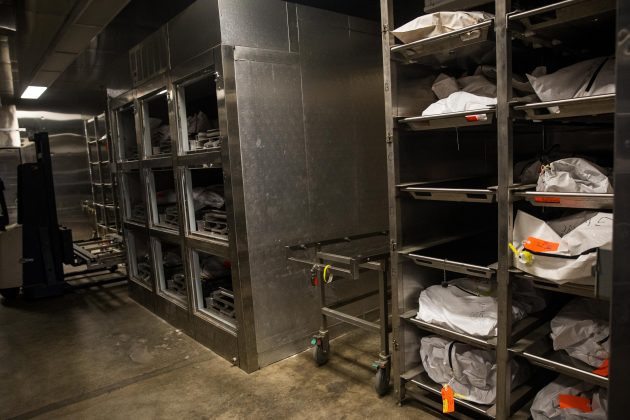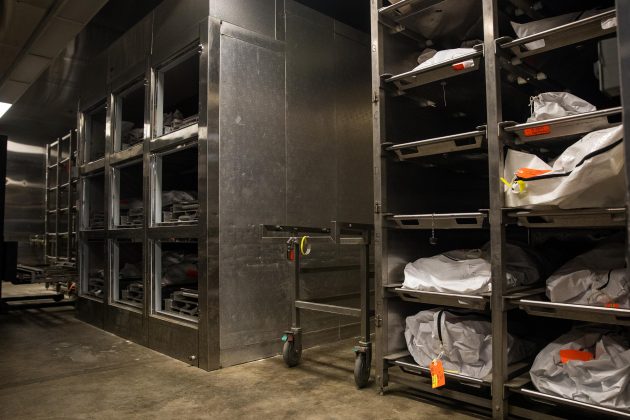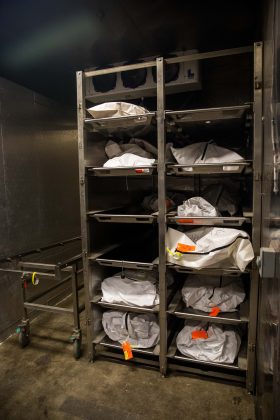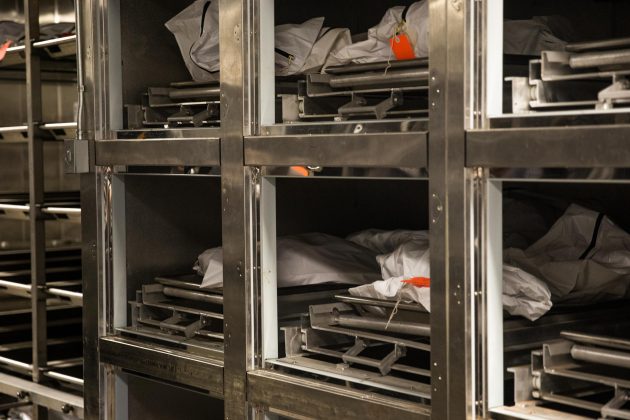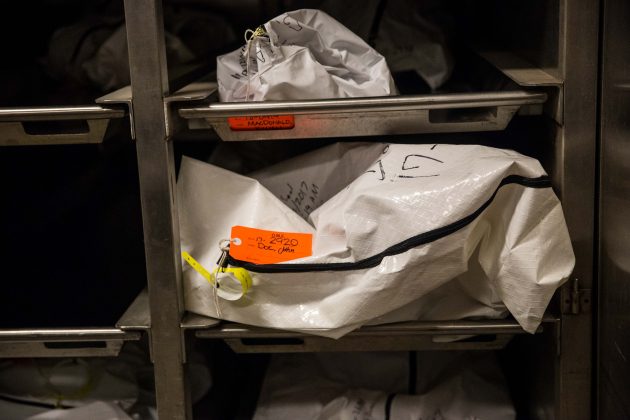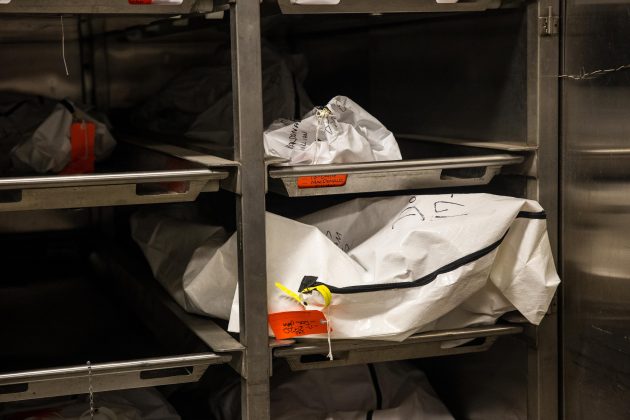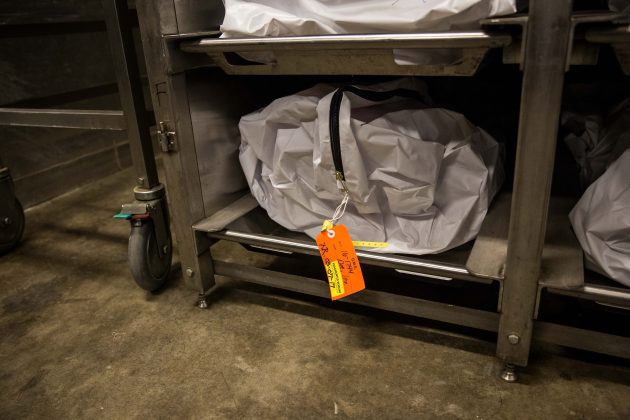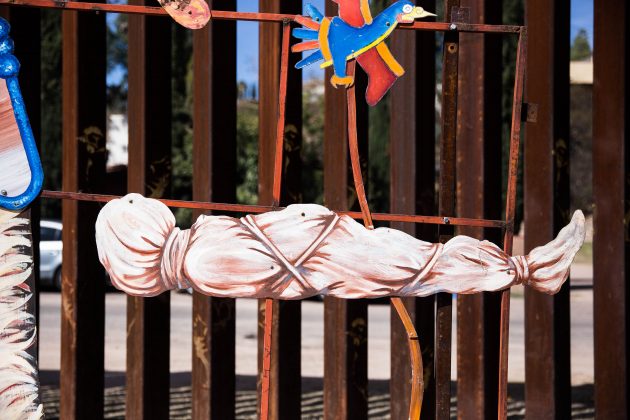Editor’s note: Immigration has been a political boondoggle for at least two decades in the United States. Congress has yet to come up with a system that will successfully address the complexities, and President Donald Trump has taken some decisions into his own hands.
Fifth in a series
TUCSON, Ariz. — Bones aren’t anything new at the Pima County Medical Examiner’s Office.
Femurs. Foot bones. Pelvic bones. Some are found by Border Patrol agents, some by people hiking or four wheeling in the Arizona desert.
But skulls are the most common bones brought to the medical examiner.
That’s because while other bones can be mistaken for animal bones, “everybody knows what a skull is,” said Dr. Gregory Hess, chief medical examiner in Tucson.
Since 2002, Hess said the medical examiner’s office has received 160 to 165 bodies a year that were found in the desert compared to about 12 bodies per year throughout the 1990s. The bodies range from fully fleshed to nothing but bleached bones, and most are believed or confirmed to be foreign nationals attempting to illegally enter the United States.
By its own count, the medical examiner’s office received 147 bodies during the most recent fiscal year.
Hess said the numbers, however, aren’t stopping anyone. “Are you going to come all the way through Mexico from Guatemala, stop at the border and see a sign that says ‘dangerous crossing’ and turn around and go all the way back?” Hess said people used to enter the country illegally through heavily populated areas, such as El Paso and San Diego, when there was much less border security in those areas. That changed when the Border Patrol introduced Operation Hold the Line in El Paso in 1993 and Operation Gatekeeper in San Diego in 1994, which concentrated agents and new technology in these areas. According to the Border Patrol’s website, these operations were “a show of force” that drastically reduced the number of people crossing illegally at both points. Hess said these operations were so successful that immigrants began crossing through the Arizona desert, which is when the number of bodies brought to the medical examiner’s office began increasing dramatically, jumping from 17 bodies in fiscal 1998 to 71 in fiscal 2000 to 222 bodies in fiscal 2010. Varying reporting procedures make a uniform tally difficult. “If you’re trying to go across the border and figure out how many of these types of deaths there are, you can’t,” he said. New Mexico, for example, funnels all human remains to one medical examiner’s office while California handles border deaths on a county-by-county basis. In addition, the Border Patrol also reports numbers by sectors rather than by counties or states and only reports bodies its agents find themselves. This makes it difficult to compare numbers of border deaths across the U.S. But no matter how bodies are counted, “I think we probably still see the highest number of remains in any single jurisdiction in the U.S. because the remains in Arizona are funneled here,” Hess said. Those numbers have created cold-storage issues in the past. Family members quickly identify and claim most bodies coming through the medical examiner’s office, such as people who die in car accidents. But the bodies of those who cross the border illegally can be in storage for weeks or longer while the medical examiner’s office attempts to identify them. “Even a relatively small number of (unidentified bodies) can create storage problems because they can be here for an extended period of time,” Hess said. Hess said the most common cause of death among the bodies of border crossers his office examines, at 45 percent, is undetermined. This is because there’s often so little left of the body that they can’t say how someone died. However, it’s likely those people died from exposure, which is the next most common cause of death at 40 percent. Exposure is an umbrella term for conditions like heat stroke, dehydration and hypothermia, determined by a lack of other findings such as traumatic injury or underlying disease. Other less common causes of death are blunt force trauma, firearms, drowning and hanging. Entering the exam room and seeing the skeletal remains on the table was chilling. Even more so was entering the indoor cold storage refrigerator holding dozens of bodies stacked to the ceiling. The sour smell of decay permeated everything. Despite what they regularly experience, Hess said there’s not much emotional toll because he separates work from his personal life. Border Patrol Agent Christopher Sullivan said their agency values human life and doesn’t want anyone to die crossing the border. He’s seen immigrants on the verge of succumbing to injuries getting help from Border Patrol agents, and those types of experiences are why the Tucson sector has invested many resources in providing aid. For example, the Border Patrol trains all its agents as first responders, and many agents become EMTs or paramedics. The Border Patrol also has 34 rescue beacons scattered throughout the desert. The 30-foot beacons reflect sunlight during the day and flash a blue light at night. Each sends a distress signal with the push of a button. “Despite someone’s criminal history, what country they’re from, if they need help we’re going to do our job to make sure that person lives another day,” Sullivan said. After bodies are brought to the medical examiner’s office, the staff’s next task is identifying as many of the remains of possible. Hess said the medical examiners’ chances of identifying a body are directly proportional to how much of the body is left and how many personal belongings are found. Between 2000 and 2017, most border crossers’ bodies they examined were either fully fleshed, meaning they had been dead less than a day, or skeletonized with bone degradation, meaning they had been dead six to eight months. The office positively identifies about 65 percent of the border crossers’ bodies. “The skeleton is a 206-piece puzzle,” said forensic anthropologist Jennifer Vollner. She determines, as much as possible, characteristics such as sex, ancestral background and approximate age and height. “The more pieces I have, the better picture I can paint.” Vollner said it’s rare to get a full skeleton, though she can approximate how long the bones have been in the open based on how bleached they are or if there’s still some flesh. They also look for distinct features, such as above or below average height or even dental work, such as in one case where there were stars on the front teeth. Vollner said they take DNA samples from the bones so they can request DNA samples for comparison if they get a solid lead on the person’s family members. They also do a dental examination, though Hess said due to the difficulty of obtaining pre-death dental records from other countries, they rarely identify someone that way. In cases in which more of the body is intact, the medical examiner’s office looks for tattoos, fingerprints or other distinguishing features. In some cases where the desert heat has mummified bodies to the point that tattoos aren’t visible or fingers are too flat for fingerprints, they’ve used an infrared camera to see tattoos and re-hydrated hands to take fingerprints. Fingerprints can then be sent to the Border Patrol, which can check them against its own records. If the Border Patrol has apprehended the person before, it can make some kind of identification, though that’s not necessarily helpful because of how commonly people who cross the border illegally carry fake IDs. Money or important phone numbers sewn into pant seams or tied onto bra straps to hide them from robbers can also provide clues. Other commonly found items are prayer cards, toiletries and extra clothes. They also see camouflage clothing and unique items sold in border towns: carpeted shoes for covering tracks and water bottles painted black so they won’t reflect light. Hess also said they would like to return the remains to family members the way they were found; however, when a body cannot be identified, it’s sent to the Public Fiduciary Office for cremation. The ashes are then kept in the county portion of the cemetery, where they can be reunited with family members, if they’re ever identified. Hess said the medical examiner’s office gets many phone calls and visits from people looking for loved ones, since people can’t report their friend or family member who’s entered the country illegally as missing to the police. “So it (the missing persons system) is kind of broken for these people because law enforcement owns missing persons,” Hess said. That’s why the Colibri Center for Human Rights has an office in the medical examiner’s office. According to its website, the Colibri Center is a family advocacy nonprofit that “work(s) with families, forensic scientists and humanitarians to end migrant death and related suffering on the U.S.-Mexico border.” Forensic anthropologist Dr. Bruce Anderson and Dr. Robin Reineke, who is now the executive director, started the center as the Missing Migrant Project in 2006 at the Pima County Medical Examiner’s Office. It was expanded into the Colibrí Center in 2013. Colibri has three main programs: the Missing Migrant Project, which helps families create “forensically detailed” missing persons reports to help medical examiners in identifying bodies; the DNA Program, which archives genetic data of unidentified bodies; and the Red de Familiares (Family Network), a support system for families whose loved ones have gone missing while crossing the border. The Missing Migrant Project effectively acts as the missing person systems for people who cross the border illegally because all information is confidential and “collected solely to support the search for a missing loved one last seen crossing the U.S.-Mexico border.” The medical examiner’s office also puts all the information about bodies it can’t identify into the National Missing and Unidentified Persons System, or NamUs, a centralized “resource center for missing persons and unidentified decedent records” created by the National Institute of Justice, according to its website. Anyone, from medical examiners and law enforcement officials to the general public, can search the free, online databases for missing and unidentified people. Hess said the NamUs database looks for potential matches between missing person reports and the details the medical examiners compile from border crosser bodies, such as distinct effects, height comparison and DNA characteristics. However, only law enforcement can put missing person reports in the database. Vollner said foreign nationals will sometimes post data from the NamUs site to Facebook groups, which has provided some leads for their office. Hess said his office also meets every week or two with the local Mexican, Guatemalan and El Salvadoran consults for help identifying bodies. Hess said despite the risks, people continue crossing the desert because they’ve attempted it multiple times and have been apprehended or have been successful. He compared the attitude of people crossing the desert with most people’s attitude toward traveling by car. “So when you get in your car and go to your next location, are you intending to die in a motor vehicle accident? Do you believe your odds of successfully arriving at your location is going to be high?” he said. “So yes, maybe I wear a seat belt, but I’m not worried about it.” Hess said there isn’t much controversy surrounding the office’s work identifying people who cross the border illegally because it’s less than 1 percent of what the office does and the facilities are already there. The office doesn’t run toxicology tests, and funding through grants, such as through the National Institute of Justice, pays for DNA tests. In addition, Mexico City and Guatemala City also occasionally run their own DNA labs, and Colibri has never asked the county for funding because volunteers run the center. Though there have been some costs over time associated with expanding the office’s cold storage, Hess said that hasn’t cost millions of dollars. He added that the office’s work with people who cross the border illegally is simply about providing accurate information, not about pushing any kind of policy change. “We just want people to have whatever information we have so they can make more informed decisions,” he said. Next: Immigrants continue crossing the border as cultural and economic incentives outweigh the deadly risksBy the numbers
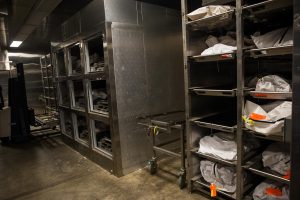
Identity crisis
Missing persons problem
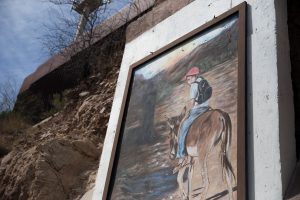
Reasons for crossing

